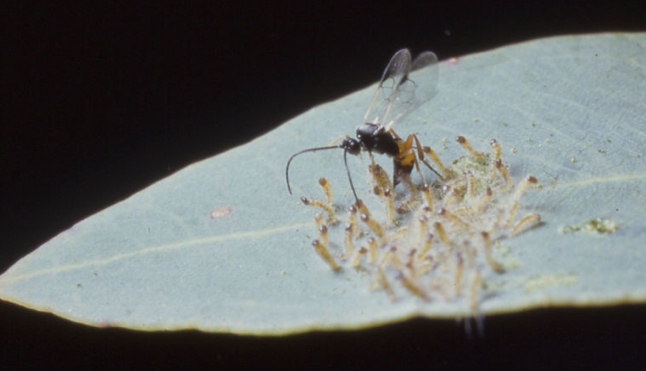PESTS AND DISEASES OF FORESTRY IN NEW ZEALAND
Gumleaf skeletoniser biological control approved
Scion is the leading provider of forest-related knowledge in New Zealand
Formerly known as the Forest Research Institute, Scion has been a leader in research relating to forest health for over 50 years. The Rotorua-based Crown Research Institute continues to provide science that will protect all forests from damage caused by insect pests, pathogens and weeds. The information presented below arises from these research activities.
From Forest Health News 210, October/November 2010.

Scion’s application to release a new parasitoid (Cotesia urabae) as a biological control agent against the eucalypt pest gumleaf skeletoniser (Uraba lugens) was approved by ERMA NZ in July. Thanks to all who have supported the project and contributed submissions to ERMA.
We had only one submission against the introduction, and no public hearing was required. We are now preparing to release the parasitoid in January 2011, initially in Auckland where the pest has had the most significant impact.
Our collaborators Geoff Allen and Raylea Parr at University of Tasmania are collecting parasitoids to ship to New Zealand in the next few weeks. These insects will be reared through one generation in the laboratory to give good numbers for the first release, as part of the Sustainable Farming Fund project. Work will continue over the next five years to establish, spread and monitor the parasitoid, although the SFF project finishes in 2011.

Gumleaf skeletoniser continues its spread, with a new location record in Napier – the first for Hawke’s Bay. It was found in a city park and seemed reasonably well established. It is unknown how the insect made the jump to Napier as the closest population is at Mt Maunganui. Most likely it has been spread by people accidentally moving eucalypt foliage with eggs or wood with pupae from further north.
Lisa Berndt
This information is intended for general interest only. It is not intended to be a substitute for specific specialist advice on any matter and should not be relied on for that purpose. Scion will not be liable for any direct, indirect, incidental, special, consequential or exemplary damages, loss of profits, or any other intangible losses that result from using the information provided on this site.
(Scion is the trading name of the New Zealand Forest Research Institute Limited.)

 Farm Forestry New Zealand
Farm Forestry New Zealand

